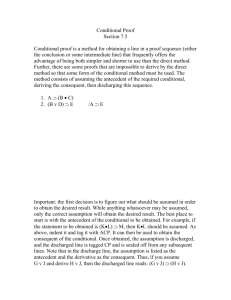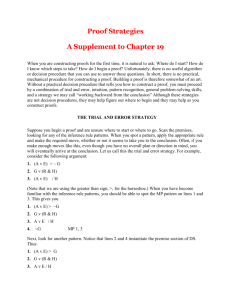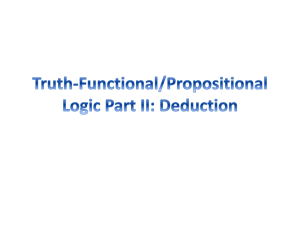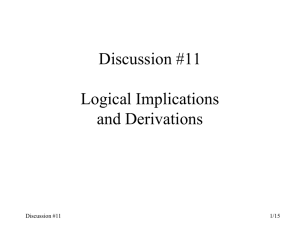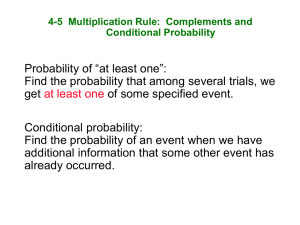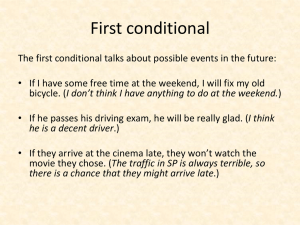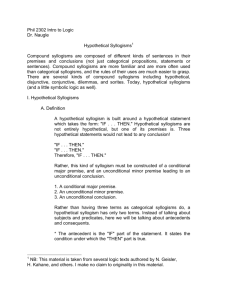Introduction to Conditional Proof
advertisement
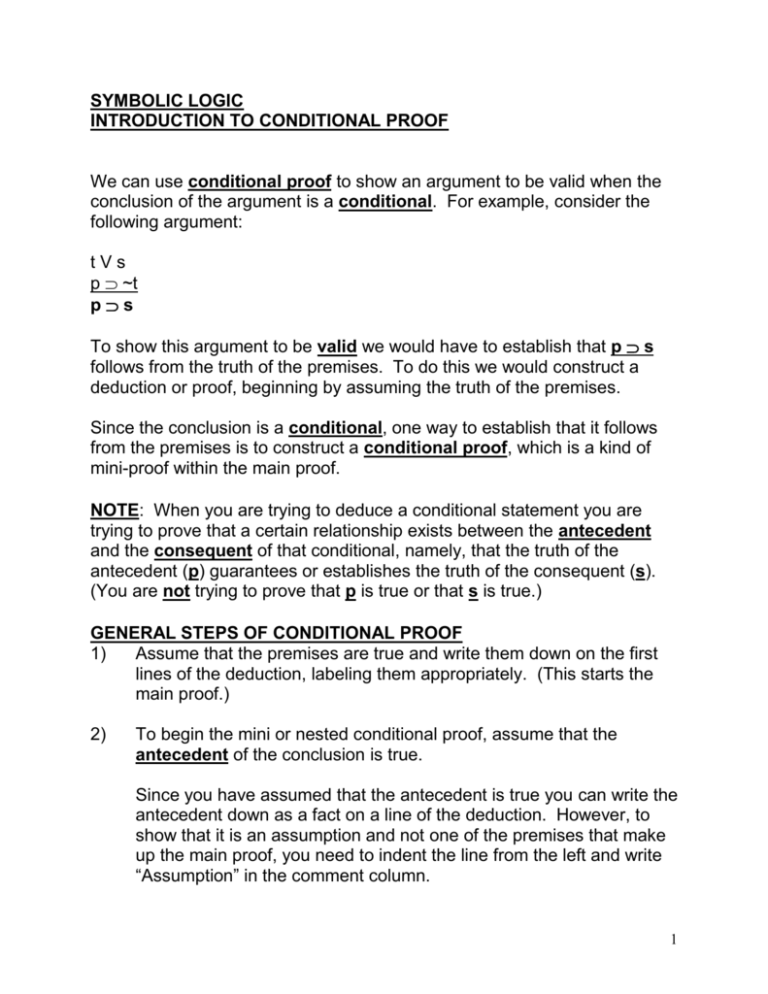
SYMBOLIC LOGIC INTRODUCTION TO CONDITIONAL PROOF We can use conditional proof to show an argument to be valid when the conclusion of the argument is a conditional. For example, consider the following argument: tVs p ~t ps To show this argument to be valid we would have to establish that p s follows from the truth of the premises. To do this we would construct a deduction or proof, beginning by assuming the truth of the premises. Since the conclusion is a conditional, one way to establish that it follows from the premises is to construct a conditional proof, which is a kind of mini-proof within the main proof. NOTE: When you are trying to deduce a conditional statement you are trying to prove that a certain relationship exists between the antecedent and the consequent of that conditional, namely, that the truth of the antecedent (p) guarantees or establishes the truth of the consequent (s). (You are not trying to prove that p is true or that s is true.) GENERAL STEPS OF CONDITIONAL PROOF 1) Assume that the premises are true and write them down on the first lines of the deduction, labeling them appropriately. (This starts the main proof.) 2) To begin the mini or nested conditional proof, assume that the antecedent of the conclusion is true. Since you have assumed that the antecedent is true you can write the antecedent down as a fact on a line of the deduction. However, to show that it is an assumption and not one of the premises that make up the main proof, you need to indent the line from the left and write “Assumption” in the comment column. 1 1. t V s 2. p ~t 3. p 3) Premise Premise Assumption Apply the rules of deduction to the information contained in the premises and the assumption, making the needed inferences one step at a time and writing down the results of each inference (making the appropriate comments in the comment column), until you have derived the consequent of the conditional. In the example given, you can combine the information in line 3 with the information in line 2, with Modus Ponens, to derive the truth of ~t, which you can then write on the next line of the deduction. 1. t V s 2. p ~t 3. p | 4. ~t Premise Premise Assumption 2, 3 Modus Ponens NOTE: The formula ~t (and any formula you deduce using the fact represented by the antecedent) is dependent upon the antecedent and thus must be indented from the left just as the assumption of the antecedent is. Indenting each inference after the assumption of the antecedent shows that each formula you deduce does not follow from the premises alone, but only from the premises combined with the assumption of the antecedent. For example, indenting line 4 shows that you have established that ~t follows from p, that p ~t. You have not established that ~t follows from the premises alone. Keep applying the rules of deduction until you have derived the consequent of the conclusion. 1. t V s 2. p ~t 3. p | 4. ~t | 5. s Premise Premise Assumption 2, 3 Modus Ponens 1, 4 Disjunctive Syllogism 2 NOTE: Deriving the consequent shows that the truth of the antecedent forces the truth of the consequent (i.e. that p s.) This completes the mini-proof. (You will not indent any more lines.) 4) To show the end of the mini-proof, draw a line under the last line of the mini-proof that begins at the far right, goes under the entire last line of the mini-proof, makes a right turn immediately to the left of the line numbers of the mini-proof and ends up pointing at the first line of the mini proof. NOTE: Since the formula you established using the mini-proof, p s, is the conclusion of the main argument, you have also proven that the conclusion follows from the premises and that the main argument is valid. You need to do is present these results with the comments that explain how you got it. 5) Stop indenting and write your results (the conditional conclusion) on the next (and last) line of the deduction. The way that you established the truth of the conclusion or conditional (p s) is by assuming the antecedent (line 3) and deriving the consequent (line 5). The rule of deduction that made this possible is called “Conditional Proof” or CP. On the last line of the deduction (line 6), to the right of the conditional conclusion, write the beginning and ending line numbers of the conditional proof (3-5) and the rule name, CP. 1. t V s Premise 2. p ~t Premise -- 3. p Assumption | 4. ~t 2, 3 Modus Ponens | 5. s 1, 4 Disjunctive Syllogism ----------------------------------------------------------------------6. p s 3-5 Conditional Proof 3
